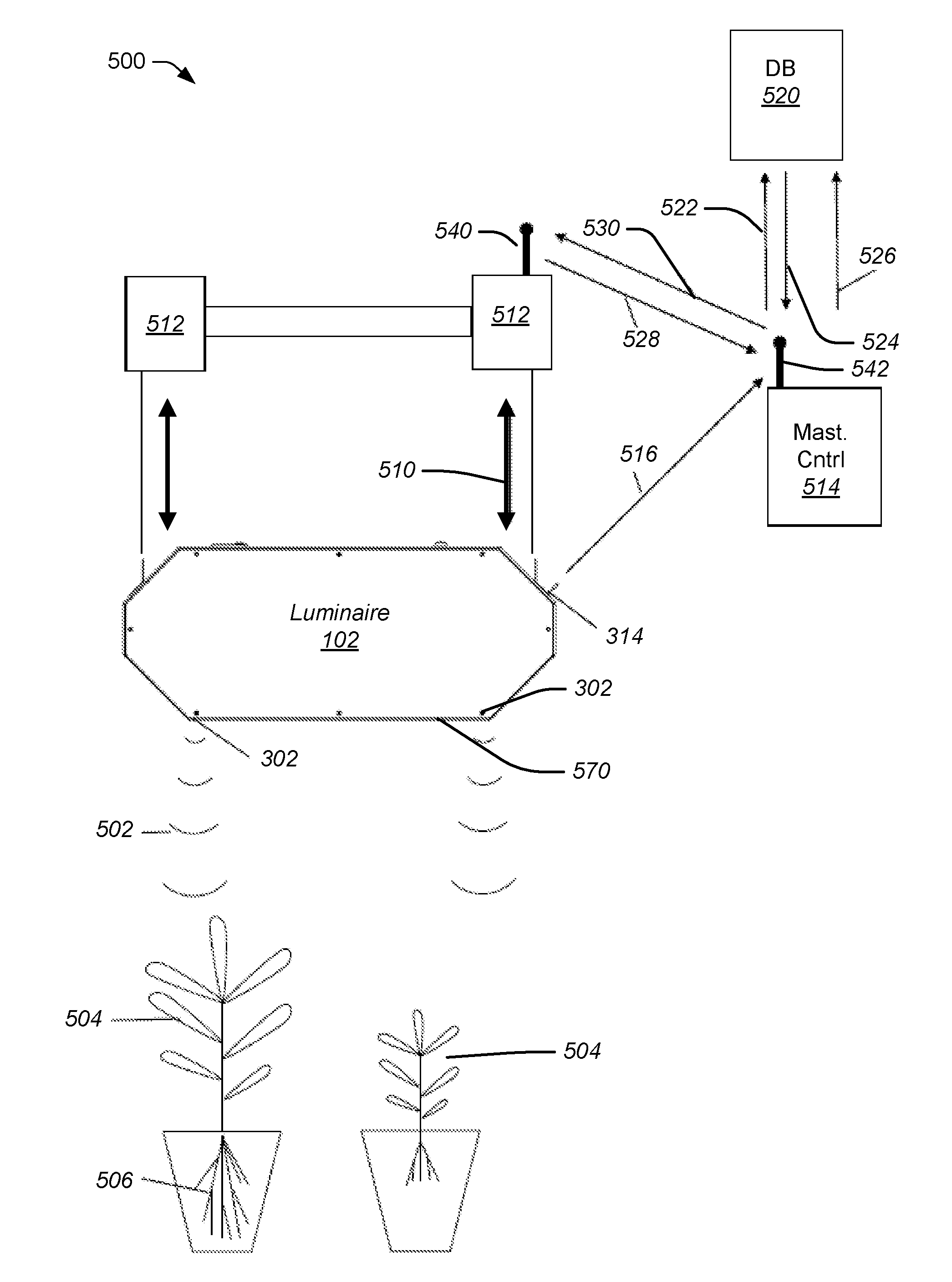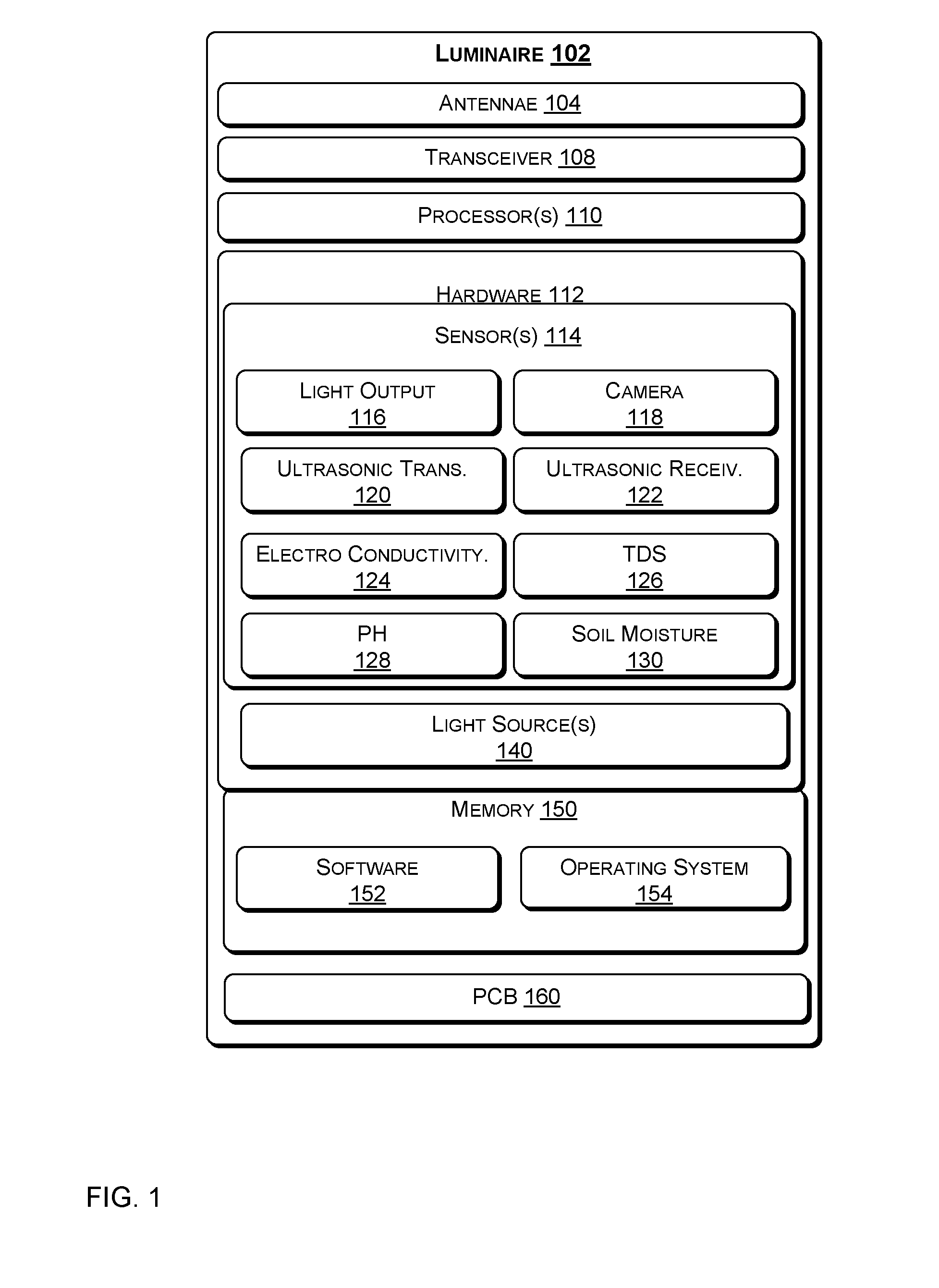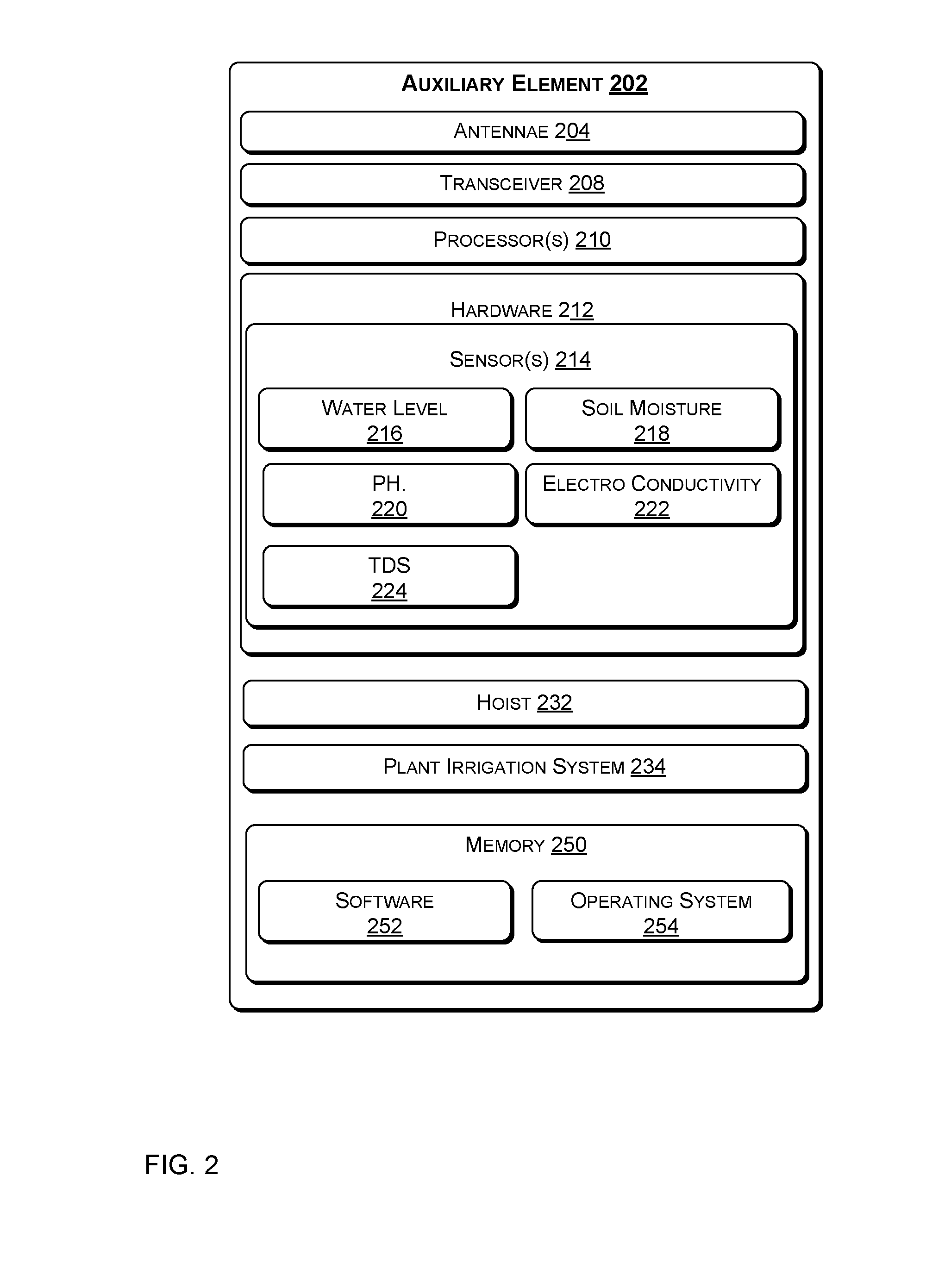Radio-controlled lighting fixture with integrated sensors
a technology of integrated sensors and lighting fixtures, which is applied in the direction of lighting support devices, instruments, applications, etc., can solve the problems of limited conventional lighting control systems, limited diode technology of led lights, and only minor improvements in technology to achieve the effect of improving lighting performan
- Summary
- Abstract
- Description
- Claims
- Application Information
AI Technical Summary
Benefits of technology
Problems solved by technology
Method used
Image
Examples
example process
[0048]With the foregoing overview of the various luminaire components, it may be helpful now to consider a high-level discussion of an example processes. To that end, FIG. 4 illustrates high level example process for radio controlling a luminaire having integrated sensors. The process 400 is illustrated as a collection of blocks in a logical flow, which each represents a sequence of operations that can be implemented in hardware, software, or a combination thereof.
[0049]In the context of software, the blocks represent computer-executable instructions that, when executed by one or more processors, perform the recited operations. Generally, computer-executable instructions may include routines, programs, objects, components, data structures, and the like that perform particular functions or implement particular abstract data types. The order in which the operations are described is not intended to be construed as a limitation, and any number of the described blocks can be combined in ...
example use cases
[0084]With the foregoing overview of the system 500, luminaire 102, and auxiliary element 202, it may be helpful to discuss some example use cases. The use cases discussed herein depict implementations in accord with the present teachings, by way of example only, not by way of limitation. It will be understood that various other use cases are supported as well based on the teachings herein.
Real-Time Monitoring and Control of Plant Development Data
[0085]The lighting system discussed herein may use sensors that are communicatively coupled via radio to automatically measure and record to a database a comprehensive set of data relating to the provenance of plants on a per-plant basis, and in some instances, a per-plant group basis. In various embodiments, sensors may include ultrasound sensors, an integrated camera, a light sensor as well as sensors for electro-conductivity, total dissolved solids (TDS), pH, and soil moisture. Accordingly, sensor measurements may include ultrasound imag...
example database
of Plant Provenance
[0094]A database 520 communicatively coupled to the control software may be continually updated to keep a record of plant development and a history of the related sensors and controlled components. Each electronic component of the system 500, such as the hoist 512 or the luminaire, may be controlled via radio. In one embodiment, the database 520 is controlled via radio. The data that has been sent to the database 520 can be updated whenever sensor data is captured, at predetermined intervals, and / or when a status of a plant being monitored has changed.
[0095]The light sensor may be configured to periodically upload captured images to the database at a frequency set by the authorized user. In one embodiment, authorized users may access the database to see time lapse images of a plant's development or to analyze historical data to isolate leading indicators of desirable plant growth.
[0096]In one example, the control software may review sensor data to identify plants ...
PUM
 Login to View More
Login to View More Abstract
Description
Claims
Application Information
 Login to View More
Login to View More - R&D
- Intellectual Property
- Life Sciences
- Materials
- Tech Scout
- Unparalleled Data Quality
- Higher Quality Content
- 60% Fewer Hallucinations
Browse by: Latest US Patents, China's latest patents, Technical Efficacy Thesaurus, Application Domain, Technology Topic, Popular Technical Reports.
© 2025 PatSnap. All rights reserved.Legal|Privacy policy|Modern Slavery Act Transparency Statement|Sitemap|About US| Contact US: help@patsnap.com



